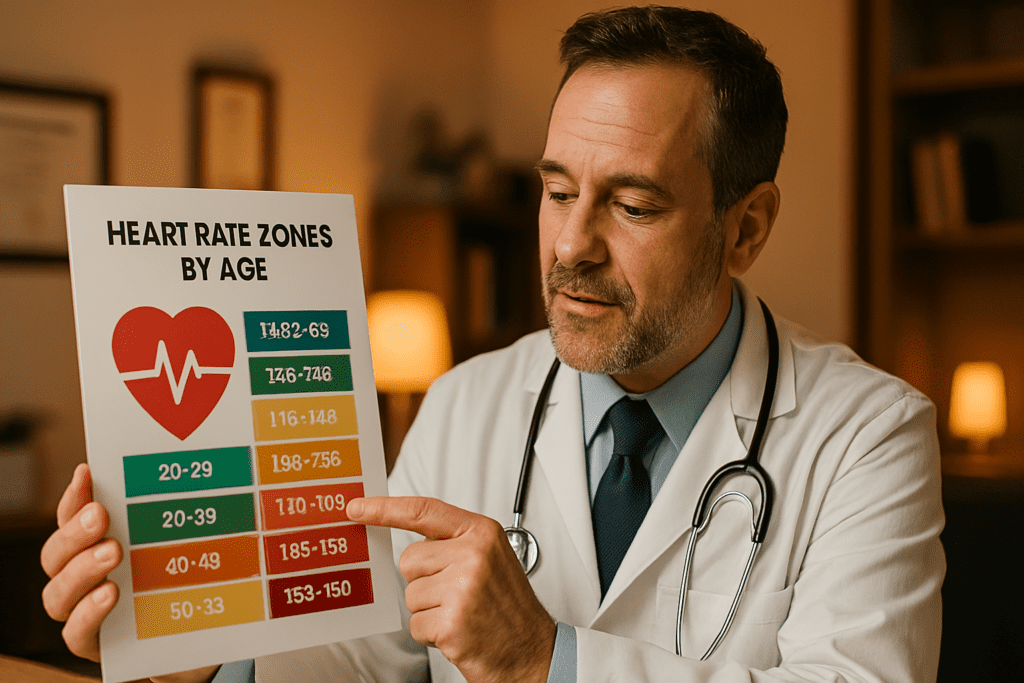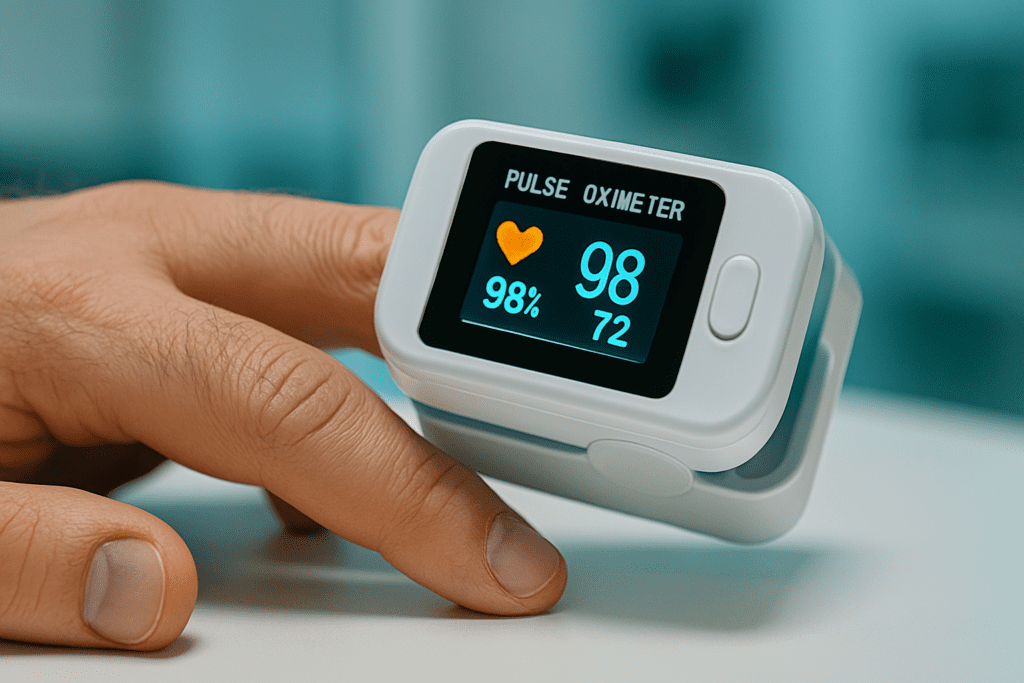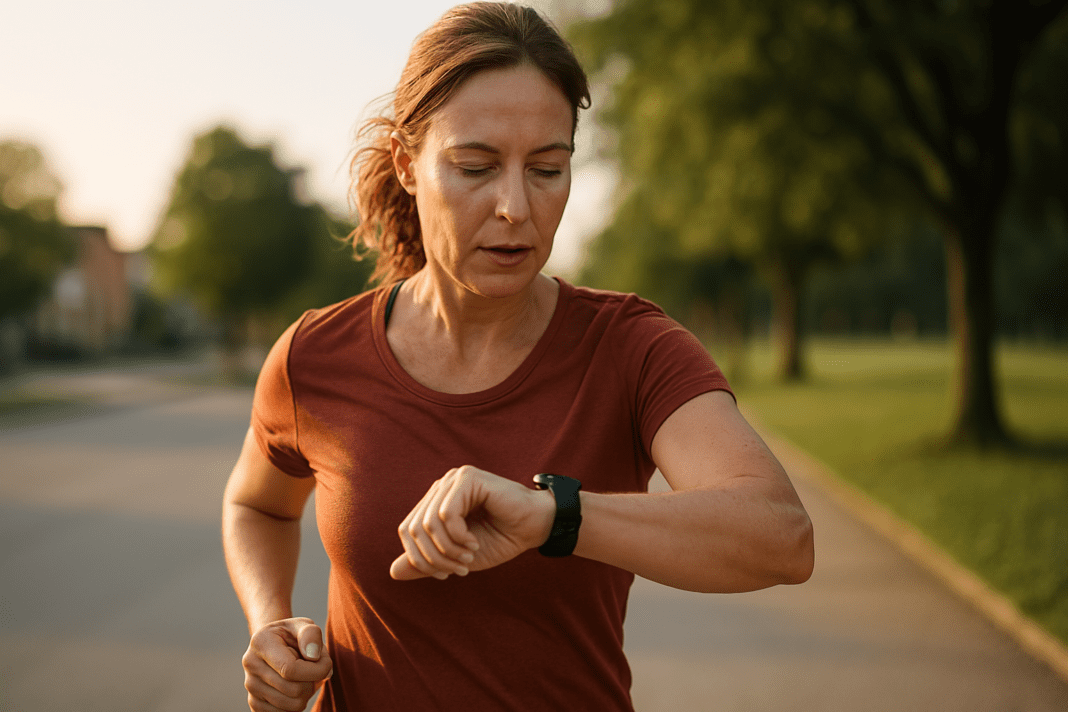Understanding Workout Heart Rate: Why It Matters for Cardiovascular Health
For anyone looking to improve their cardiovascular health through exercise, one of the most critical metrics to understand is your heart rate during physical activity. Specifically, knowing what is a good heart rate when working out can help you exercise more efficiently, avoid overexertion, and achieve optimal fitness results. The human heart, a powerful muscular organ, adjusts its pace according to physical demand. During aerobic activity, your heart rate increases to deliver more oxygen-rich blood to working muscles. This elevated heart rate—often referred to as your workout heart rate—can tell you how hard your body is working and whether you’re training in a way that supports your goals, whether that’s weight loss, endurance, or heart health.
You may also like: Top Cardiologist-Approved Cardio Workouts to Improve Cardiovascular Fitness and Heart Health Naturally
While heart rate naturally fluctuates throughout the day, it becomes particularly meaningful during exercise. An elevated pulse isn’t inherently concerning—on the contrary, it can signal that your cardiovascular system is adapting in healthy ways. But the key lies in targeting the right intensity. That’s why understanding terms like target heart rate, maximum heart rate (often abbreviated as max HR), and heart rate zones by age is so essential. When you learn how to find target heart rate and monitor your progress through a reliable heart rate chart, you’re empowering yourself with data that reflects your physical exertion in real-time. This article will help you decode the numbers, understand what is a good heart rate while working out, and explore how heart rate during exercise connects to long-term wellness.
Defining Key Concepts: What Is Target Heart Rate and Why Should You Track It?
Target heart rate refers to the ideal range your heart should be beating at during physical activity to gain cardiovascular benefits without placing excessive strain on your system. It is typically expressed as a percentage of your maximum heart rate, which itself is a rough estimate of the highest number of beats per minute (BPM) your heart can safely handle during intense activity. For most adults, the max HR is commonly estimated using the formula: 220 minus your age. While this isn’t perfectly precise for every individual, it serves as a useful starting point when asking, “what is my max heart rate?”
To figure out your target heart rate, most experts recommend working at 50% to 85% of your max HR, depending on your fitness level and training goals. This is known as the target heart rate zone, and understanding it is vital for safe and effective aerobic exercise. When you train below this zone, you may not be challenging your heart enough to stimulate adaptation. When you exceed it, especially by a wide margin, you may be pushing too hard and increasing your risk for injury or cardiovascular strain.
Understanding the target heart rate definition helps demystify why some workouts feel productive while others leave you drained or unsatisfied. Using a heart rate chart by age or a pulse rate chart during workouts can help you visually see where you fall in relation to these zones. These charts can even break down aerobic exercise heart rate goals for different intensities—such as fat burning, moderate cardio, or peak performance zones. By becoming familiar with your workout heart rate and learning how to work out heart rate max with these tools, you can tailor your fitness routine in ways that align with your personal health goals.
How to Calculate Your Maximum Heart Rate and Use It Effectively
Knowing how to work out heart rate max gives you the foundational number needed to determine your heart rate zones. Although the classic formula of 220 minus age is widely used, newer research suggests that this approach may overestimate max HR in younger individuals and underestimate it in older adults. Alternative formulas such as 208 minus 0.7 times your age can offer more accuracy, particularly for those over 40. Still, these formulas are estimates. If you’re engaged in high-level training or have cardiovascular concerns, stress testing under medical supervision may yield more personalized insights.
Once you’ve calculated your max HR, you can find your various target heart rate zones by applying different percentages. For moderate aerobic training, aim for 50% to 70% of max HR. For vigorous exercise, 70% to 85% is typical. These percentages form the basis of heart rate zones by age, which can be easily mapped using a heart BPM chart. For instance, a 40-year-old with a max HR of approximately 180 would target a zone between 90 and 153 BPM depending on their training objective.
A helpful way to remember how to figure target heart rate is to use the Karvonen formula, which incorporates your resting heart rate—a critical but often overlooked number in cardiovascular health. Resting heart rate is the number of beats per minute when you’re completely at rest, and it can vary based on fitness, stress levels, medications, and sleep. A normal resting heart rate for adults typically ranges from 60 to 100 BPM, although trained athletes often have a resting heart rate below 60. Understanding what is a good resting heart rate, or what is a healthy resting heart rate, can add another dimension to interpreting your cardiovascular data.

The Role of Resting Heart Rate in Exercise Monitoring and Heart Health
Your resting heart rate is more than a passive number—it’s a window into your cardiovascular efficiency and overall health status. As previously mentioned, a normal resting heart rate falls between 60 and 100 BPM for most adults, with values closer to 60 often indicating better fitness. Monitoring changes in resting heart rate over time can reveal whether your heart is adapting positively to exercise or responding to stress, illness, or overtraining. Understanding what is a healthy resting heart rate versus a potentially concerning one can help you adjust your fitness strategy accordingly.
When considering how to find target heart rate, incorporating your resting heart rate into the equation offers more individualized precision. The Karvonen formula uses this data to establish training zones that reflect your unique physiology, not just your age. This can be especially useful for individuals who feel that standard heart rate chart by age tables don’t fully reflect their performance or endurance level.
Moreover, resting heart rate provides context when comparing workout data. For instance, if your resting rate has gradually lowered due to consistent training, your body may require slightly higher exertion to reach the same target zones. Conversely, a spike in resting heart rate over several days might indicate fatigue or insufficient recovery. In such cases, reducing intensity or altering your routine may be more beneficial than pushing through. In essence, knowing your normal resting heart rate and watching for deviations offers another tool for safeguarding your cardiovascular health during exercise.
Exploring Heart Rate Zones by Age and Their Impact on Fitness Goals
Heart rate zones by age are structured to help you train smarter, not harder. Each zone corresponds to a specific percentage of your maximum heart rate and serves different purposes—from warm-ups to fat burning to anaerobic capacity. For most individuals, Zone 1 (50–60% of max HR) is used for light recovery and active rest. Zone 2 (60–70%) improves endurance and fat metabolism. Zone 3 (70–80%) boosts aerobic capacity, while Zone 4 (80–90%) is commonly used in high-intensity interval training (HIIT). Finally, Zone 5 (90–100%) is typically reserved for short bursts of maximum effort and is not suitable for extended periods.
These zones are not just theoretical—they correlate with real physiological changes. For example, training in Zone 2 helps develop the ability to use fat as fuel, which supports weight management and metabolic efficiency. Working in Zone 3 enhances cardiac output, increasing the amount of blood your heart pumps per beat. Understanding these zones through a heart rate chart or pulse rate chart helps you strategically select workouts that match your goals—whether that’s running a marathon, improving daily energy levels, or lowering your blood pressure.
Many people also wonder, “what should my heart rate be while working out?” or “what is a good heart rate when exercising?” These are legitimate questions because the answer depends on age, fitness level, and the type of exercise. For instance, a good running heart rate by age for a 30-year-old might fall between 133 and 161 BPM for moderate to vigorous intensity, based on a max HR of around 190. Comparing your current BPM against a heart BPM chart can provide quick insights into whether you’re within a safe and productive range during workouts.
Real-Time Monitoring: Tools to Track Heart Rate During Exercise
Technology has revolutionized how we track heart rate during exercise. Wearable devices like smartwatches, chest straps, and fitness bands allow users to monitor their pulse in real-time, making it easier to stay within desired heart rate zones. This helps answer questions like “what should heart rate be when working out” or “what should your pulse rate be when exercising” by providing data that can be interpreted instantly or reviewed over time. By using these tools consistently, you can create a feedback loop that guides your workout intensity and progression.
These devices often display additional features like heart rate variability (HRV), recovery scores, and even suggested workout intensities based on recent trends. Some apps go further by generating personalized heart rate zones and using machine learning to predict optimal training loads. While no device is perfect, even basic models provide enough data to make informed decisions about how hard you’re working and whether adjustments are needed.
However, data is only useful if it’s interpreted in context. For example, if you notice that your heart rate during walking is unusually high, it could be due to dehydration, lack of sleep, or underlying stress rather than poor fitness. In such cases, asking, “what is a good heart rate while working out?” must include broader factors like lifestyle and baseline health. Similarly, knowing what your heartbeat should be after driving—especially after a long or stressful commute—can also reveal how your body responds to external stress. A temporary elevation might be normal, but persistently high readings may warrant further evaluation.
What Should Your Heart Rate Be When Walking, Running, or Strength Training?
Different forms of exercise demand different levels of cardiovascular output, which in turn affects your heart rate. When walking at a brisk pace, a normal heart rate while walking might fall between 90 and 120 BPM for most adults, depending on fitness level and terrain. If your pulse is significantly higher, it could suggest deconditioning or another factor such as anxiety or insufficient warm-up. Asking, “what is a good heart rate while working out” must include the specific context—brisk walking and sprinting are not expected to yield the same BPM.
During running or high-intensity workouts, heart rates naturally climb higher. For many, a good running heart rate by age ranges from 70% to 90% of max HR. This means a 50-year-old might target 119 to 153 BPM, aligning with a healthy aerobic training zone. However, reaching beyond this—into 95% or more of your max HR—should be reserved for brief intervals, and only if you’re conditioned for it.
In resistance training, heart rate can be more erratic. You may experience short spikes during intense lifts followed by drops during rest periods. Though not a sustained cardiovascular workout, this pattern still supports heart health by improving blood vessel flexibility and cardiac efficiency. Regardless of the workout type, asking, “what should my pulse rate be while exercising” is about finding a sustainable yet challenging intensity that doesn’t cause discomfort or fatigue outside of normal recovery.

How to Use a Heart Rate Chart to Guide Your Fitness Strategy
A heart rate chart is a practical tool that simplifies the relationship between exercise intensity, age, and cardiovascular goals. Typically, a heart rate chart by age includes columns for different age ranges and rows for heart rate zones as a percentage of max HR. These charts are helpful for quickly referencing whether your current pulse aligns with your intended workout goal—be it fat burn, endurance, or high-intensity conditioning. Pulse rate charts are especially helpful in group fitness classes, where participants may have diverse ages and fitness levels but can still tailor intensity based on BPM.
Even more sophisticated heart BPM charts can incorporate variables such as resting heart rate or physical conditioning, offering a more tailored snapshot. For those engaged in structured training—like marathon prep or interval workouts—this type of detail can make the difference between hitting a plateau and making measurable progress. Moreover, pairing this with daily logs or fitness tracking apps ensures your training remains progressive and avoids overuse.
It’s also worth noting that heart rate data is most valuable when viewed over time. A single spike or drop might not be cause for concern, but persistent trends—like elevated post-workout heart rates or a rising resting heart rate—may signal the need for a recovery day or medical input. As you learn how to figure target heart rate in various scenarios, these tools become part of a larger strategy that puts science and personalization at the center of your exercise plan.
Frequently Asked Questions: Understanding Workout Heart Rate and Cardiovascular Health
1. Can your heart rate stay elevated after driving, and what should your heartbeat be after driving? Yes, your heart rate can remain elevated after driving, especially if the experience was stressful, involved high alertness, or required navigating dense traffic. What should your heartbeat be after driving depends on several factors, including your baseline resting heart rate, the length of your drive, and whether caffeine or emotional stress played a role. For most individuals, heart rate should gradually return to a normal resting heart rate range—typically between 60 and 100 BPM—within 10 to 15 minutes of parking. If you consistently notice a high pulse after driving, it may reflect underlying stress or cardiovascular deconditioning. In such cases, comparing your post-driving rate with a heart rate chart by age can provide insights, and relaxation techniques or physical conditioning may help normalize your cardiovascular response.
2. How can I improve my resting heart rate and what is considered a healthy range? Improving your resting heart rate often involves sustained cardiovascular training, high-quality sleep, and stress management. A normal resting heart rate typically falls between 60 and 100 BPM, but what is a healthy resting heart rate may lean closer to the lower end of that spectrum for well-conditioned individuals. Regular aerobic exercise like brisk walking, swimming, or cycling helps strengthen the heart, enabling it to pump more efficiently and beat less frequently at rest. Lifestyle adjustments such as reducing alcohol intake, increasing potassium-rich foods, and practicing mindfulness can also promote improvements. Monitoring your resting heart rate trends over time using a heart BPM chart can help track progress and reveal how your heart is adapting.
3. Is there a more accurate way to determine my maximum heart rate than using age-based formulas? While traditional age-based formulas—such as 220 minus your age—offer a convenient way to estimate your max HR, they may not be accurate for everyone, especially older adults or trained athletes. To refine your maximum heart rate, consider undergoing a graded exercise test in a clinical or athletic setting. This direct assessment measures your physiological response to increasing workload and captures your true max HR, rather than relying on population averages. Genetic variation, medications, and cardiovascular conditioning all influence this number. Understanding your true maximum heart rate can help you define more precise heart rate zones by age and customize your aerobic exercise heart rate goal accordingly.
4. How do wearable devices measure heart rate during exercise and are they reliable? Wearable fitness devices typically use optical sensors to measure heart rate during exercise by detecting blood flow through capillaries in the wrist. While convenient, these devices can vary in accuracy depending on skin tone, movement artifacts, and sensor quality. Chest strap monitors tend to provide more accurate data, particularly during vigorous workouts where optical sensors may struggle. Even so, smartwatches and trackers still offer useful insights when trends are tracked over time. When evaluating workout heart rate or what is a good heart rate when exercising, it helps to compare readings across devices and cross-reference them with a heart rate chart by age to ensure consistency.
5. What should my pulse rate be while exercising if I have cardiovascular disease or take medications like beta blockers? For individuals with heart disease or on medications that affect heart rate, such as beta blockers, what should my pulse rate be while exercising becomes a more complex question. These medications lower both resting heart rate and max HR, making standard target zones potentially misleading. In such cases, working with a cardiac rehabilitation specialist or exercise physiologist is crucial for establishing safe training thresholds. Modified pulse rate chart references or perceived exertion scales are often used in place of traditional heart rate charts. Tailoring workout heart rate goals in this context ensures both safety and progress without overburdening the cardiovascular system.
6. Can daily walking significantly improve heart rate zones and overall cardiovascular conditioning? Absolutely. Although it may seem low-intensity, consistent brisk walking can elevate your heart rate into Zone 2 of the heart rate zones by age framework, which is beneficial for endurance and fat metabolism. Over time, walking can shift your normal heart rate while walking downward, indicating improved cardiovascular efficiency. Even moderate increases in heart rate during walking contribute to long-term adaptations such as lower resting heart rate, better oxygen delivery, and reduced blood pressure. Using a heart BPM chart or a pulse rate chart to track changes can validate your improvement. The key lies in duration and frequency—regular 30-minute walks five days a week can yield noticeable changes.
7. What psychological factors can influence your workout heart rate or resting heart rate? Stress, anxiety, and even anticipation before a workout can significantly affect your heart rate during exercise and your resting heart rate. Elevated cortisol and adrenaline levels can cause your pulse to spike, even in the absence of physical exertion. Over time, chronic stress may raise what should be your normal resting heart rate or disrupt heart rate variability, which is a marker of autonomic nervous system balance. Incorporating stress-reduction practices such as yoga, deep breathing, or guided imagery can normalize your response. Understanding what is a healthy resting heart rate requires recognizing not just physical, but also emotional and psychological influences.
8. How does hydration status impact what should heart rate be when working out? Hydration plays a critical role in maintaining an optimal workout heart rate, as even mild dehydration increases cardiovascular strain. When fluid levels drop, blood volume decreases, forcing the heart to beat faster to maintain circulation. This leads to a higher-than-expected heart rate during exercise, which can skew your perception of effort and make it harder to stay in your target heart rate zone. Monitoring your hydration level before and after workouts can help stabilize readings and improve your accuracy when interpreting a heart BPM chart or heart rate chart. Staying well-hydrated supports your ability to hit your aerobic exercise heart rate goal safely and efficiently.
9. Why does my heart rate remain elevated longer than expected after workouts? Post-exercise heart rate recovery is a valuable indicator of cardiovascular fitness. If your pulse remains elevated well beyond your cooldown, it may reflect overtraining, insufficient recovery, or dehydration. Using a pulse rate chart or heart rate chart by age can help you track your recovery curve over time and spot trends that may indicate fatigue. A consistently slow recovery may also point to underlying inflammation, poor sleep quality, or high stress levels. Knowing how to figure target heart rate isn’t enough—understanding how quickly your heart returns to normal is equally vital for optimizing your fitness routine.
10. Can interval training improve both your max HR performance and resting heart rate trends? Yes, interval training—alternating high and low intensity—can effectively push your cardiovascular system toward better efficiency. High-intensity intervals temporarily raise your heart rate close to max HR, which over time can expand your heart’s stroke volume and improve oxygen utilization. Meanwhile, the recovery periods between intervals promote parasympathetic nervous system activity, helping to lower your resting heart rate over time. Using a heart rate chart or heart BPM chart during these sessions provides valuable feedback for adjusting intensity. For those wondering what is a good running heart rate by age or what is a good heart rate when working out, interval training offers a dynamic and adaptable solution to improve in both domains.

Conclusion: What Is a Good Heart Rate When Working Out and How to Find It for Lifelong Heart Health
In answering the question, “what is a good heart rate when working out?” it becomes clear that the answer is both scientific and personal. While max HR and heart rate zones by age provide a helpful framework, individual variation plays a significant role. Your fitness level, resting heart rate, workout goals, and even stress levels all influence what your target heart rate should be. The key is not just hitting a specific number but understanding the physiological meaning behind it. Whether you’re trying to establish an aerobic exercise heart rate goal or wondering what your heartbeat should be after driving or exercising, context matters.
A combination of methods—calculating your max HR, monitoring your workout heart rate, using a heart rate chart, and considering your normal resting heart rate—will give you the clearest picture of your cardiovascular performance. When used properly, tools like a pulse rate chart or wearable monitor empower you to push harder when appropriate and recover when needed, promoting long-term heart health and fitness gains.
Ultimately, what should your heart rate be when working out? It should be within a safe, productive range that aligns with your goals and your body’s signals. It should reflect effort without exhaustion, challenge without compromise. By learning how to find your target heart rate and respecting the signals your heart gives you, you’re not just training your body—you’re honoring your heart’s central role in lifelong health.
cardiovascular training tips, fitness heart rate zones, heart health monitoring, pulse monitoring devices, exercise intensity guide, cardio workout tips, athletic performance tracking, aerobic endurance training, smart fitness tracking, exercise physiology basics, fitness recovery tips, improving heart efficiency, cardiovascular health strategies, fitness wearables comparison, cardiac rehabilitation exercises, optimizing exercise routines, heart-smart workouts, exercise safety for beginners, personalized fitness metrics, athletic heart performance
Further Reading:
What is the ideal heart rate when running?
Target Heart Rate Zones: Safely Maximize Your Workouts
What Should Your Heart Rate Be During Exercise?
Disclaimer
The information contained in this article is provided for general informational purposes only and is not intended to serve as medical, legal, or professional advice. While MedNewsPedia strives to present accurate, up-to-date, and reliable content, no warranty or guarantee, expressed or implied, is made regarding the completeness, accuracy, or adequacy of the information provided. Readers are strongly advised to seek the guidance of a qualified healthcare provider or other relevant professionals before acting on any information contained in this article. MedNewsPedia, its authors, editors, and contributors expressly disclaim any liability for any damages, losses, or consequences arising directly or indirectly from the use, interpretation, or reliance on any information presented herein. The views and opinions expressed in this article are those of the author(s) and do not necessarily reflect the official policies or positions of MedNewsPedia.


